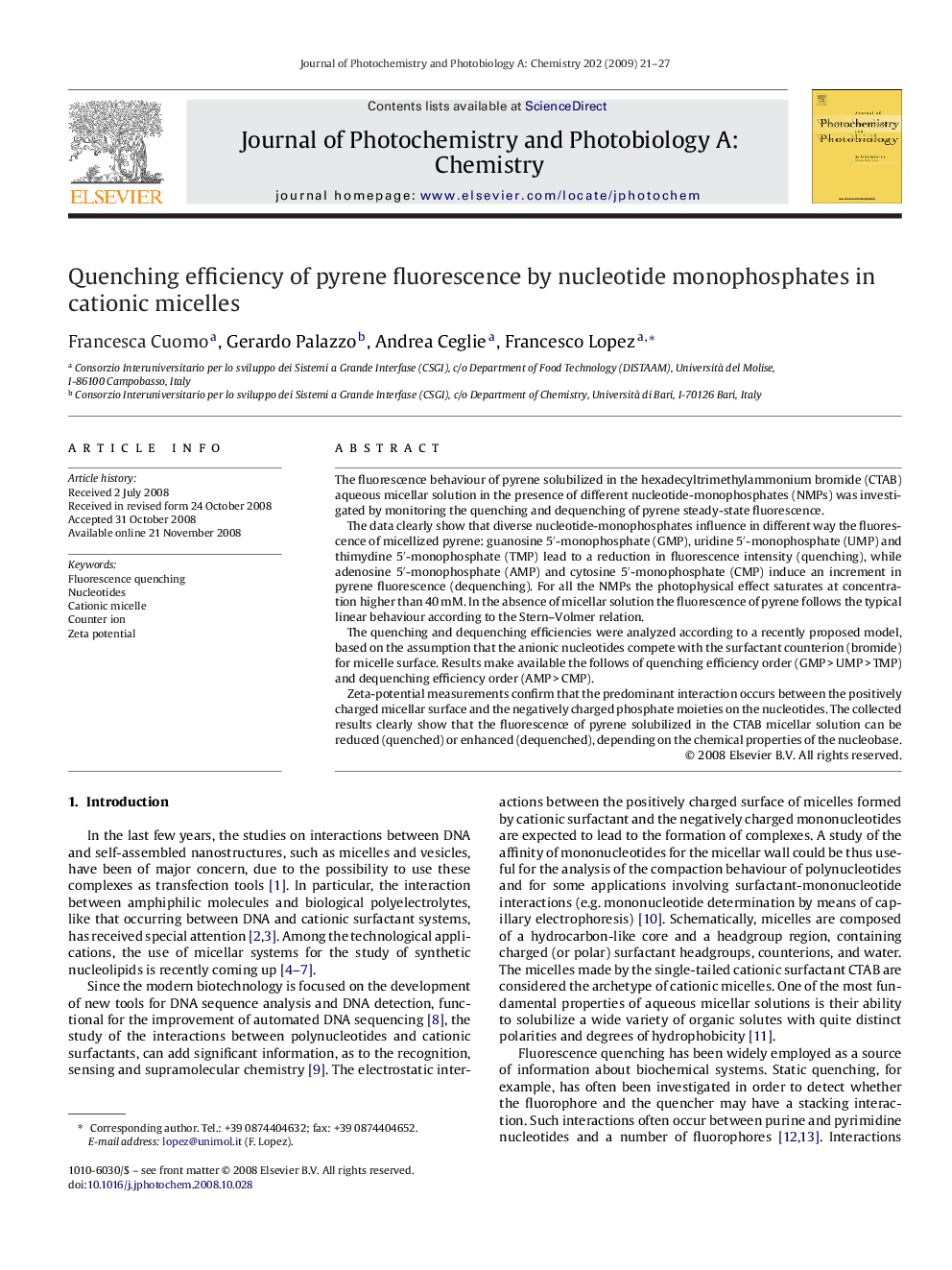| Article ID | Journal | Published Year | Pages | File Type |
|---|---|---|---|---|
| 28195 | Journal of Photochemistry and Photobiology A: Chemistry | 2009 | 7 Pages |
The fluorescence behaviour of pyrene solubilized in the hexadecyltrimethylammonium bromide (CTAB) aqueous micellar solution in the presence of different nucleotide-monophosphates (NMPs) was investigated by monitoring the quenching and dequenching of pyrene steady-state fluorescence.The data clearly show that diverse nucleotide-monophosphates influence in different way the fluorescence of micellized pyrene: guanosine 5′-monophosphate (GMP), uridine 5′-monophosphate (UMP) and thimydine 5′-monophosphate (TMP) lead to a reduction in fluorescence intensity (quenching), while adenosine 5′-monophosphate (AMP) and cytosine 5′-monophosphate (CMP) induce an increment in pyrene fluorescence (dequenching). For all the NMPs the photophysical effect saturates at concentration higher than 40 mM. In the absence of micellar solution the fluorescence of pyrene follows the typical linear behaviour according to the Stern–Volmer relation.The quenching and dequenching efficiencies were analyzed according to a recently proposed model, based on the assumption that the anionic nucleotides compete with the surfactant counterion (bromide) for micelle surface. Results make available the follows of quenching efficiency order (GMP > UMP > TMP) and dequenching efficiency order (AMP > CMP).Zeta-potential measurements confirm that the predominant interaction occurs between the positively charged micellar surface and the negatively charged phosphate moieties on the nucleotides. The collected results clearly show that the fluorescence of pyrene solubilized in the CTAB micellar solution can be reduced (quenched) or enhanced (dequenched), depending on the chemical properties of the nucleobase.
